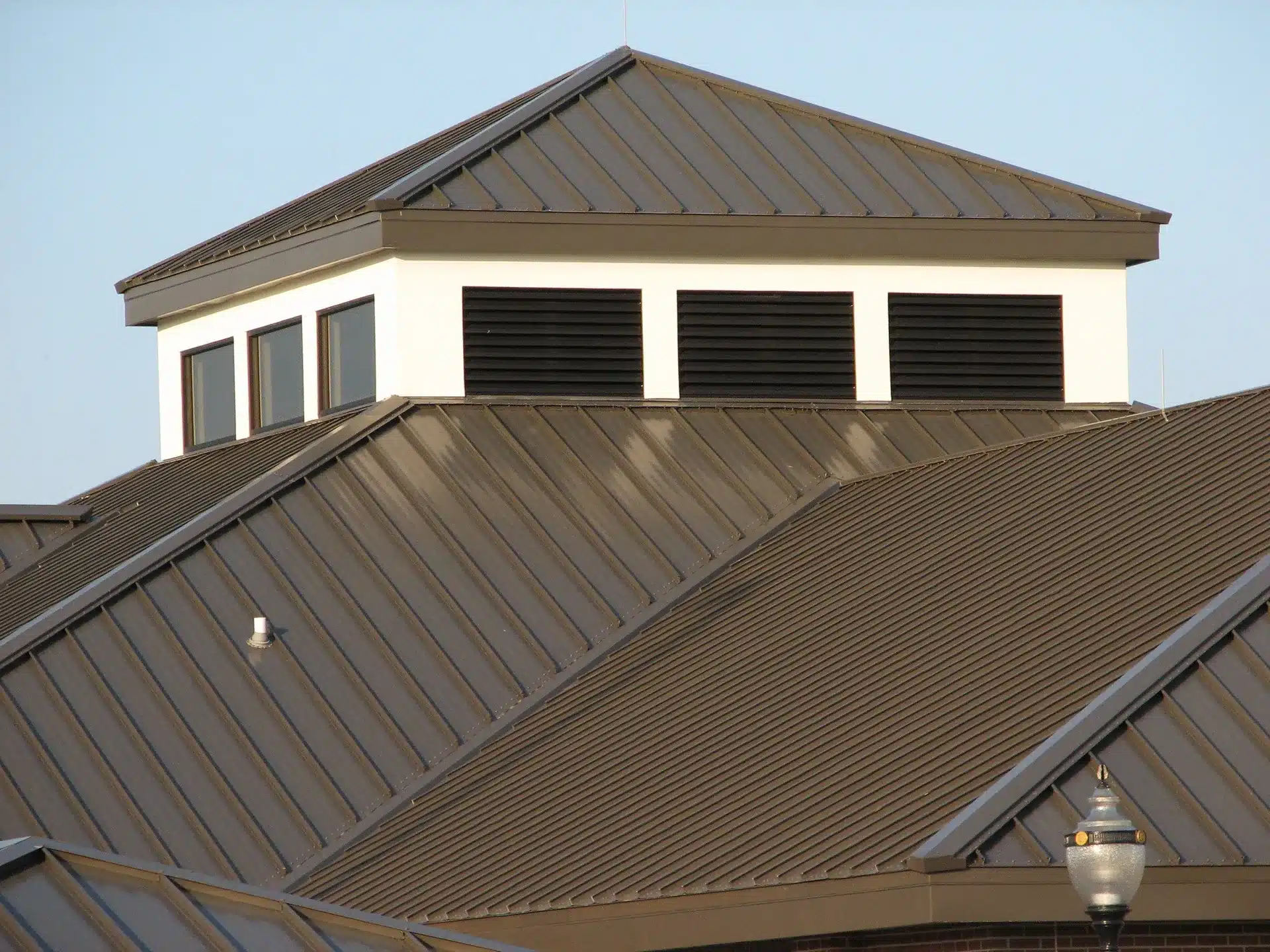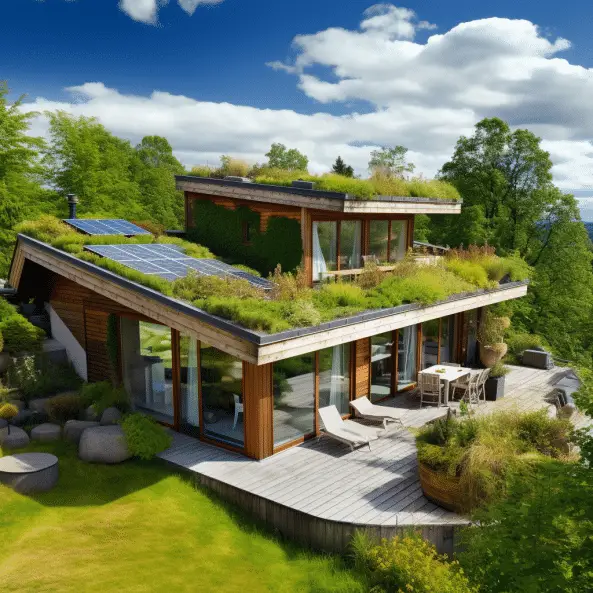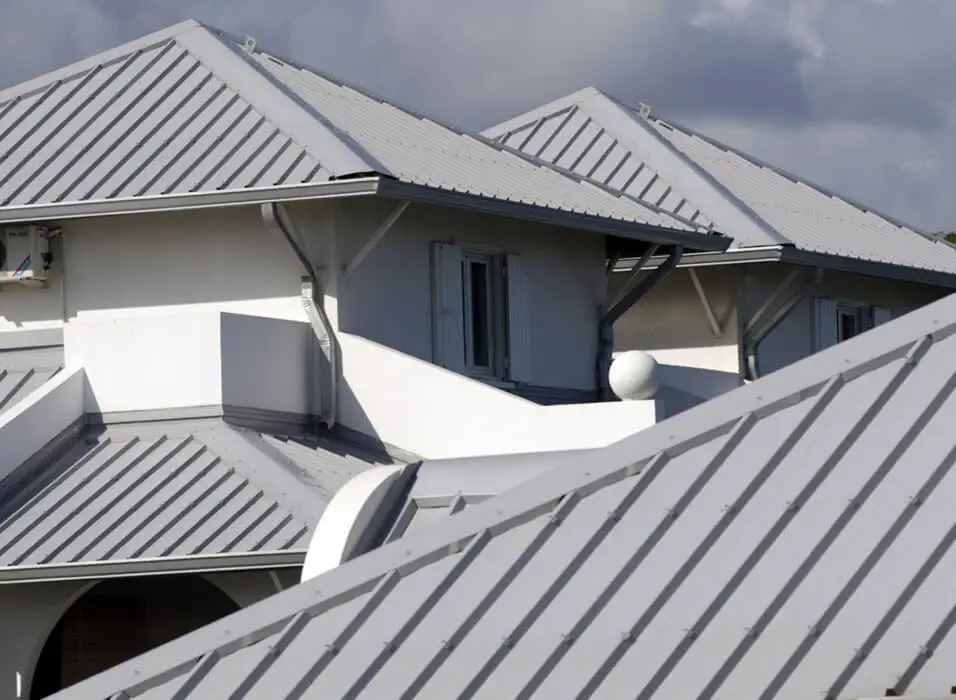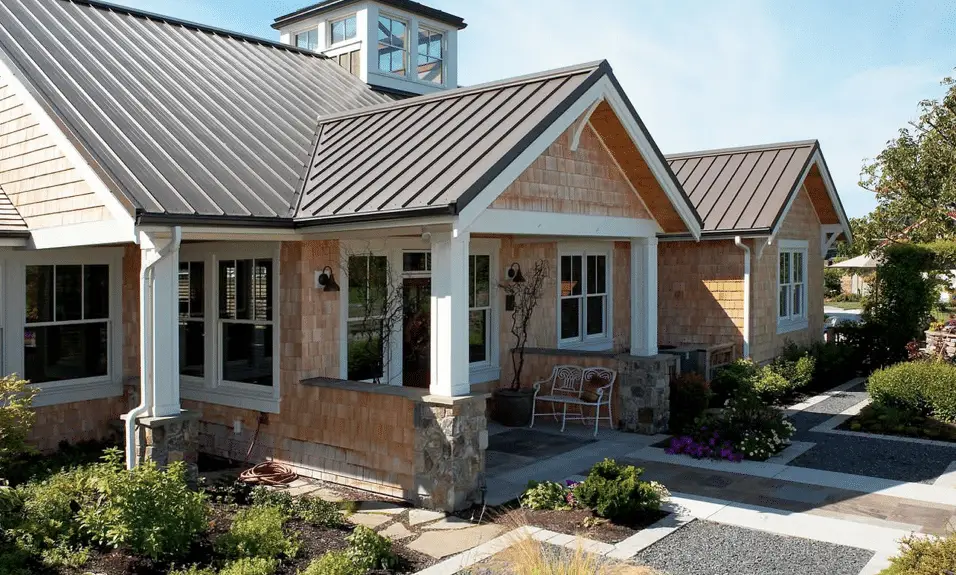What Is The Biggest Problem With Metal Roofs
Introduction
What Is The Biggest Problem With Metal Roofs: Metal roofs have gained significant popularity in recent years due to their durability, longevity, and energy efficiency. As homeowners and businesses seek more sustainable and cost-effective roofing options, metal roofs have emerged as a viable alternative to traditional asphalt shingles. However, like any other roofing material, metal roofs also come with their own set of challenges and drawbacks. In this article, we will explore the biggest problem with metal roofs and discuss potential solutions to overcome it.
One of the primary concerns associated with metal roofs is their susceptibility to noise during rainfall or hailstorms. Unlike other roofing materials, such as asphalt shingles or clay tiles, metal roofs can amplify the sound of raindrops hitting the surface. This can be particularly bothersome for individuals living in areas with heavy rainfall or frequent storms. The noise generated by rain on a metal roof can disrupt sleep, conversations, and overall peace and quiet within a home or building.
However, it is important to note that not all metal roofs are equally noisy. The level of noise largely depends on the type of metal used, the thickness of the roof, and the presence of proper insulation. For instance, metal roofs made from lightweight materials like aluminum or steel tend to produce more noise compared to those made from heavier metals like copper or zinc. Additionally, installing insulation materials, such as foam or felt, between the metal roof and the underlying structure can significantly reduce the noise level.
Another significant problem with metal roofs is their susceptibility to denting and damage from hail or falling debris. While metal roofs are generally more durable than other roofing materials, they are not entirely immune to impact damage. Hailstorms, falling tree branches, or even walking on the roof with improper footwear can cause dents and scratches on the metal surface. These damages not only compromise the aesthetic appeal of the roof but can also lead to leaks and structural issues if left unaddressed.
However, advancements in metal roof technology have led to the development of impact-resistant coatings and materials. These coatings, often made from polymers or elastomers, provide an additional layer of protection against hail and debris. Additionally, opting for thicker gauge metal panels and regularly inspecting the roof for any signs of damage can help prevent major issues and ensure the longevity of the metal roof.
While metal roofs offer numerous benefits, such as durability and energy efficiency, they also come with their fair share of challenges. Noise during rainfall and susceptibility to denting and damage are two of the biggest problems associated with metal roofs. However, with proper insulation, material selection, and maintenance, these issues can be mitigated, allowing homeowners and businesses to enjoy the advantages of metal roofing without compromising on comfort and protection.
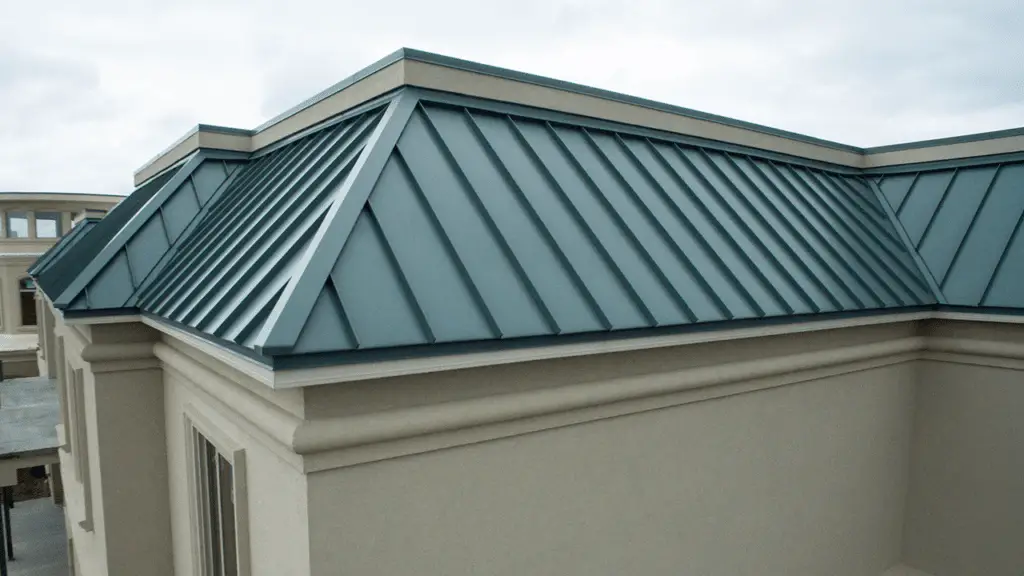
Are metal roofs noisy when raining?
The short answer is: It depends. Metal roofs without much else, such as an open frame roof on a barn or warehouse, would be WAY louder than an asphalt shingle system. But, with a modern metal roofing system, properly installed, rain noise would be much more comparable to what we see in an asphalt shingle roof.
When it comes to choosing a roofing material, one common concern that homeowners have is the noise level during rainfall. Metal roofs have gained popularity in recent years due to their durability and longevity, but many people wonder if they are noisy when it rains. The answer to this question is not a simple yes or no, as there are several factors that can affect the noise level of a metal roof during rainfall.
Firstly, it is important to note that the noise level of a metal roof during rainfall can vary depending on the type of metal used. Different metals have different acoustic properties, which can impact the sound produced when rain hits the roof. For example, a solid metal roof made of steel or aluminum may produce more noise compared to a metal roof with additional insulation or underlayment. These additional layers can help dampen the sound and reduce the noise level during rainfall.
Secondly, the design and installation of the metal roof can also play a role in its noise level during rainfall. The way the metal panels are installed, the spacing between them, and the presence of any gaps or seams can affect how much noise is produced. A properly installed metal roof with tight seams and minimal gaps is likely to be quieter during rainfall compared to a poorly installed roof with loose panels.
Furthermore, the pitch or slope of the roof can impact the noise level during rainfall. A steeper roof pitch allows rainwater to flow off more quickly, reducing the amount of time it spends on the roof and minimizing the noise. On the other hand, a flatter roof pitch may result in water pooling and staying on the roof for longer, potentially increasing the noise level.
While metal roofs can be noisier than other roofing materials during rainfall, it is important to consider the specific factors that can affect the noise level. The type of metal used, the design and installation of the roof, and the roof pitch all play a role in determining how noisy a metal roof will be when it rains. Additionally, it is worth noting that the noise level experienced inside a house with a metal roof during rainfall is often much lower than what is heard outside. Overall, with proper insulation and installation, metal roofs can provide a durable and long-lasting roofing option without excessive noise concerns.
What are the disadvantages of steel roofing sheets?
One of the disadvantages of metal roofs is its cost. Metal roofs will cost twice or even three times the value of other roofing materials. However, the advantages outweigh these costs. You can consider metal roofs as a huge investment.
Introduction:
Steel roofing sheets have gained popularity in recent years due to their durability, strength, and aesthetic appeal. However, like any other roofing material, they also have their disadvantages. It is important to consider these drawbacks before making a decision about whether steel roofing sheets are the right choice for your project. In this article, we will explore some of the disadvantages of steel roofing sheets and discuss their potential impact on your roofing needs.
High Initial Cost:
One of the main disadvantages of steel roofing sheets is their high initial cost. Compared to other roofing materials such as asphalt shingles or clay tiles, steel roofing sheets can be significantly more expensive. This higher cost can be a deterrent for homeowners or businesses with budget constraints. However, it is important to note that while the initial cost may be higher, steel roofing sheets offer long-term cost savings due to their durability and low maintenance requirements.
Noisy During Rainfall:
Another disadvantage of steel roofing sheets is that they can be noisy during rainfall. The sound of raindrops hitting the metal surface can be quite loud, which may be bothersome for some individuals. However, this issue can be mitigated by using proper insulation and underlayment materials during the installation process. Additionally, the noise level can vary depending on the design and thickness of the steel roofing sheets.
Potential for Corrosion:
Steel roofing sheets are susceptible to corrosion, especially in areas with high humidity or saltwater exposure. Over time, this can lead to rust formation, which not only affects the appearance of the roof but also compromises its structural integrity. To prevent corrosion, it is essential to choose high-quality steel roofing sheets that are specifically designed to resist rust. Regular maintenance, such as cleaning and applying protective coatings, can also help prolong the lifespan of the roof.
Heat Absorption:
Steel roofing sheets have the potential to absorb and retain heat, especially in hot climates. This can result in increased indoor temperatures and higher cooling costs during the summer months. However, this issue can be addressed by using reflective coatings or insulation materials that minimize heat absorption. It is important to consult with a roofing professional to determine the most suitable options for your specific climate and energy efficiency requirements.
While steel roofing sheets offer numerous advantages, it is crucial to consider their disadvantages as well. The high initial cost, potential for noise during rainfall, susceptibility to corrosion, and heat absorption are some of the drawbacks associated with this roofing material. By understanding these disadvantages and taking appropriate measures to address them, you can make an informed decision about whether steel roofing sheets are the right choice for your project.
Are metal roofs safe?
Safety. Metal roofs will not spark and ignite into flames during a wildfire or lightning strike. Energy efficiency. Metal roofs reflect the suns UV and infrared light rays that contribute to roof surface radiant heat, which can result in a 10-25% reduction in cooling costs.
Metal roofs have gained popularity in recent years due to their durability, energy efficiency, and aesthetic appeal. Homeowners and business owners alike are considering metal roofs as a viable option for their properties. However, one common concern that arises is whether metal roofs are safe. In this article, we will explore the safety aspects of metal roofs and provide an informed answer to this question.
Firstly, it is important to note that metal roofs are highly resistant to extreme weather conditions. Whether it is heavy rain, strong winds, or hailstorms, metal roofs can withstand the elements better than traditional roofing materials. This durability is due to the inherent strength of metal and the way it is installed. Metal roofs are typically installed with interlocking panels, which provide added protection against leaks and wind uplift. Additionally, metal roofs have a high fire resistance rating, making them a safe choice for areas prone to wildfires.
Secondly, metal roofs are lightweight compared to other roofing materials such as concrete or clay tiles. This lightweight nature reduces the structural load on the building, making it less susceptible to collapse during earthquakes or other natural disasters. Furthermore, metal roofs do not absorb water, preventing the growth of mold and mildew, which can be harmful to the health of occupants. This moisture resistance also helps to maintain the structural integrity of the roof over time.
Moreover, metal roofs are environmentally friendly and contribute to a safer living environment. They are often made from recycled materials and can be recycled again at the end of their lifespan. This reduces the amount of waste sent to landfills and minimizes the environmental impact. Additionally, metal roofs are energy efficient, reflecting sunlight and reducing the heat absorbed into the building. This can lead to lower energy consumption and a more comfortable indoor environment, especially in hot climates.
Metal roofs are a safe and reliable option for both residential and commercial buildings. Their durability, resistance to extreme weather conditions, and environmental benefits make them a popular choice among homeowners and business owners. If you are considering a new roof for your property, metal roofs should definitely be on your list of options to explore.
Why do metal roofs leak?
The most common cause of metal roof leaks is the roofing screws used to attach the panels to the frame of the building. The screw design, installation method, and angle can all affect the way that the roof performs over time. Metal roofing screws create a hole in the roof, but generally do not seal the opening.
Introduction:
Metal roofs are a popular choice for homeowners due to their durability and longevity. However, like any roofing material, they can develop leaks over time. Understanding the reasons behind metal roof leaks is crucial in order to prevent and address them effectively. In this article, we will explore the common causes of metal roof leaks and provide insights on how to mitigate them.
Causes of Metal Roof Leaks:
One of the primary reasons why metal roofs may develop leaks is improper installation. If the metal panels are not correctly fastened or sealed, water can seep through the gaps and infiltrate the underlying structure. It is essential to hire experienced and skilled professionals who are well-versed in metal roof installation to ensure a proper and watertight fit.
Another factor that can contribute to metal roof leaks is the presence of rust or corrosion. Over time, exposure to moisture and harsh weather conditions can cause metal roofs to deteriorate, leading to the formation of rust. Rust weakens the integrity of the roof and creates openings for water to penetrate. Regular inspections and maintenance can help identify and address rust-related issues before they escalate into significant leaks.
Preventing Metal Roof Leaks:
To prevent metal roof leaks, it is crucial to prioritize regular inspections and maintenance. This includes checking for loose or damaged panels, inspecting the flashing around chimneys and vents, and clearing any debris that may accumulate on the roof. Additionally, applying a protective coating or sealant can help enhance the roof’s resistance to water and extend its lifespan.
Proper drainage is also essential in preventing metal roof leaks. Ensuring that gutters and downspouts are clear of debris and functioning correctly allows water to flow away from the roof efficiently. Improper drainage can lead to water pooling on the roof, increasing the risk of leaks and water damage.
Addressing Metal Roof Leaks:
If a metal roof does develop a leak, prompt action is necessary to minimize potential damage. Identifying the source of the leak can be challenging, as water can travel along the roof’s surface before entering the interior. However, a thorough inspection by a professional can help pinpoint the exact location of the leak.
Once the source of the leak is identified, repairs should be carried out promptly. This may involve replacing damaged panels, sealing gaps or cracks, or applying a waterproof membrane. It is crucial to address the issue promptly to prevent further damage to the roof and the underlying structure.
Metal roofs can develop leaks due to various reasons, including improper installation, rust or corrosion, and lack of maintenance. Preventing metal roof leaks involves regular inspections, proper drainage, and proactive maintenance. In the event of a leak, prompt action and professional repairs are necessary to mitigate damage. By understanding the causes and taking appropriate preventive measures, homeowners can ensure the longevity and reliability of their metal roofs.
How do you protect a metal roof?
Paint the Roof
A new paint job can protect the roof from rust and corrosion, especially if the roof is painted with a primer that contains at least 80% zinc as zinc can be great at preventing rust. The best way to use a zinc-rich primer is to make sure that the roof is prepared before painting.
Introduction:
A metal roof is a durable and long-lasting roofing option that offers several benefits, including energy efficiency, fire resistance, and low maintenance. However, like any other roofing material, it is essential to protect a metal roof to ensure its longevity and performance. By implementing proper protective measures, you can enhance the lifespan of your metal roof and prevent potential damage caused by various factors such as weather conditions, corrosion, and debris accumulation.
Weather Protection:
One of the primary concerns when it comes to protecting a metal roof is safeguarding it against harsh weather conditions. Metal roofs are susceptible to damage from extreme temperatures, heavy rain, snow, and hail. To protect your metal roof from these elements, it is crucial to ensure proper insulation and ventilation. Adequate insulation helps regulate the temperature inside your home, preventing heat transfer and reducing the risk of condensation. Additionally, proper ventilation allows for the escape of moisture and heat, preventing the formation of ice dams and reducing the chances of roof damage.
Corrosion Prevention:
Corrosion is another significant threat to metal roofs, especially in areas with high humidity or proximity to saltwater. To protect your metal roof from corrosion, it is essential to apply a protective coating or paint. These coatings act as a barrier, preventing moisture and corrosive substances from coming into direct contact with the metal surface. Regular inspections and maintenance are also crucial to identify and address any signs of corrosion promptly. Additionally, ensuring proper drainage and gutter systems can help prevent water accumulation, which can contribute to corrosion.
Debris Removal:
Accumulated debris, such as leaves, branches, and dirt, can cause damage to a metal roof if not promptly removed. Regularly inspect your roof and remove any debris that may have accumulated. This can be done using a soft-bristle broom or a leaf blower. Avoid using sharp tools or abrasive materials that can scratch or dent the metal surface. Additionally, trimming overhanging tree branches can prevent them from falling onto the roof during storms or high winds, reducing the risk of damage.
Maintenance and Inspections:
Regular maintenance and inspections are vital for the protection of a metal roof. Schedule professional inspections at least once a year to identify any potential issues or signs of damage. Promptly address any loose or damaged panels, loose fasteners, or deteriorated sealants. Additionally, keep the roof clean by removing any moss or algae growth, as they can trap moisture and contribute to corrosion. Regularly check the gutters and downspouts for clogs or damage, ensuring proper water drainage.
Protecting a metal roof involves implementing various measures to safeguard it against weather conditions, corrosion, and debris accumulation. By ensuring proper insulation, ventilation, and applying protective coatings, you can enhance the durability and longevity of your metal roof. Regular maintenance, inspections, and debris removal are also crucial to identify and address any potential issues promptly. By following these protective measures, you can enjoy the benefits of a well-protected metal roof for years to come.
Metal roofs offer several advantages over other roofing materials. Firstly, they are highly durable and can last for 50 years or more with proper maintenance. Metal roofs are resistant to fire, rot, and insect damage, making them a long-lasting option for homeowners. Additionally, metal roofs are lightweight, which reduces the stress on the structure of the building and allows for easier installation.
Another advantage of metal roofs is their energy efficiency. They reflect sunlight, reducing the amount of heat absorbed by the building and lowering cooling costs. Metal roofs are also environmentally friendly as they are often made from recycled materials and can be recycled at the end of their lifespan.
However, there are some disadvantages to consider. Metal roofs can be more expensive upfront compared to other roofing materials such as asphalt shingles. They can also be noisy during heavy rain or hailstorms, although this can be mitigated by proper insulation and underlayment. Additionally, metal roofs can be prone to denting from hail or falling debris, although this can be minimized by choosing thicker gauge metal.
How do metal roofs perform in extreme weather conditions such as heavy rain, hail, or high winds?
Metal roofs are known for their exceptional performance in extreme weather conditions, making them a popular choice for homeowners and businesses alike. When it comes to heavy rain, metal roofs offer superior protection due to their interlocking panels and tight seams, which prevent water from seeping through. This reduces the risk of leaks and water damage to the underlying structure. Additionally, metal roofs have a steep slope, allowing rainwater to quickly and efficiently drain off the roof, further minimizing the chances of water pooling or causing any structural issues.
In terms of hail, metal roofs are highly resistant and can withstand hailstones of varying sizes without sustaining significant damage. This is primarily due to the durability and strength of metal materials such as steel or aluminum. Metal roofs are designed to absorb the impact of hailstones, preventing them from puncturing or denting the surface. This resilience not only protects the roof but also extends its lifespan, providing long-term value for homeowners.
When it comes to high winds, metal roofs are an excellent choice. They are engineered to be wind-resistant and can withstand strong gusts without lifting or becoming loose. Metal roofs are typically installed with fasteners that securely anchor the panels to the underlying structure, ensuring they remain intact even in hurricane-force winds. This durability makes metal roofs a reliable option for areas prone to severe storms or hurricanes.
What maintenance and upkeep is required for metal roofs, and how does it differ from other roofing materials?
Metal roofs require relatively low maintenance compared to other roofing materials. Regular inspections and cleaning are essential to ensure their longevity and optimal performance. One advantage of metal roofs is that they are resistant to rot, insects, and mildew, which eliminates the need for treatments or frequent repairs associated with these issues. However, there are a few maintenance tasks specific to metal roofs that differ from other roofing materials.
Firstly, it is important to keep the metal roof clean from debris, leaves, and branches, as they can trap moisture and cause damage over time. Regularly removing these materials will prevent potential water pooling and the risk of corrosion. Additionally, inspecting the roof for any loose or damaged panels, fasteners, or sealants is crucial. Any identified issues should be promptly addressed to prevent water leakage and further damage.
Furthermore, metal roofs may require occasional repainting to maintain their appearance and protect against rust. The frequency of repainting depends on the type of metal used and the climate conditions. Consulting with a professional roofer can provide guidance on the specific maintenance requirements for a metal roof based on its material and location.
Are there any specific concerns or challenges associated with installing metal roofs on different types of buildings or structures?
When it comes to installing metal roofs on different types of buildings or structures, there are indeed some specific concerns and challenges that need to be taken into consideration. One of the main concerns is the weight of the metal roofing materials. Metal roofs can be significantly heavier than other roofing options such as asphalt shingles or wood shakes. This means that the underlying structure of the building needs to be strong enough to support the weight of the metal roof. In some cases, additional reinforcement may be required, which can add to the overall cost and complexity of the installation process.
Another challenge associated with installing metal roofs on different types of buildings is the potential for noise. Metal roofs can be quite noisy during heavy rain or hailstorms. This can be a concern for buildings that require a quiet environment, such as schools, hospitals, or office spaces. However, there are solutions available to mitigate the noise, such as installing insulation or using soundproofing materials during the installation process.
Additionally, the shape and design of the building can also pose challenges when installing metal roofs. Buildings with complex rooflines, multiple angles, or unique architectural features may require custom fabrication of the metal roofing materials. This can increase the cost and time required for installation, as well as the need for skilled professionals who are experienced in working with metal roofs.
How does the cost of metal roofs compare to other roofing options, and are there any long-term cost savings or benefits associated with choosing a metal roof?
When comparing the cost of metal roofs to other roofing options, it is important to consider both the upfront expenses and the long-term savings. Metal roofs tend to have a higher initial cost compared to traditional roofing materials such as asphalt shingles or wood shakes. However, it is crucial to note that metal roofs offer significant long-term cost savings and benefits that make them a worthwhile investment.
One of the main advantages of metal roofs is their exceptional durability and longevity. Unlike other roofing materials that may require frequent repairs or replacement, metal roofs can last for 50 years or more with proper maintenance. This longevity translates into long-term cost savings as homeowners do not have to worry about the expenses associated with frequent repairs or re-roofing.
Additionally, metal roofs are highly energy-efficient, which can result in substantial savings on energy bills over time. Metal reflects sunlight, reducing heat absorption and keeping the interior of the building cooler. This reduces the need for excessive air conditioning during hot summer months, leading to lower energy consumption and cost savings. Furthermore, metal roofs are often made from recycled materials and can be recycled at the end of their lifespan, making them an environmentally friendly choice.
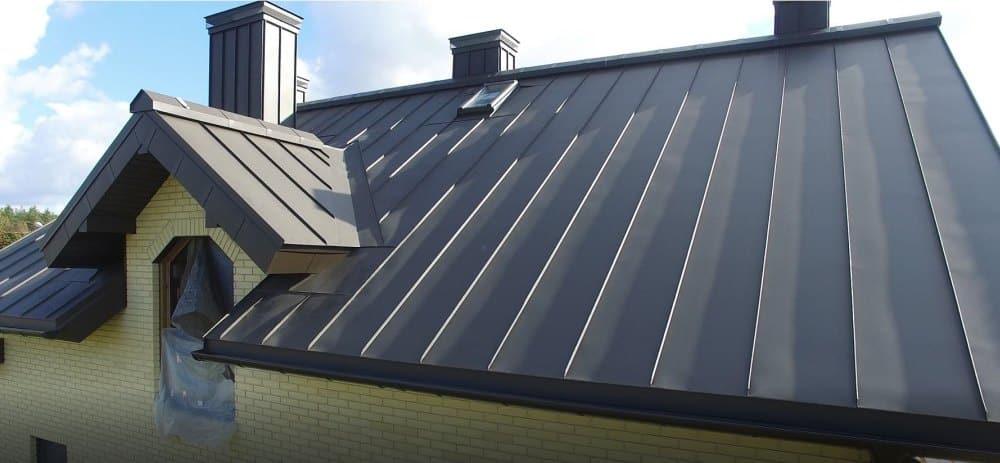
Conclusion
Metal roofs have gained popularity in recent years due to their numerous benefits. They are known for their durability, energy efficiency, and aesthetic appeal. However, like any other roofing material, metal roofs also have their drawbacks. When considering the biggest problem with metal roofs, it is important to weigh the pros and cons to make an informed decision.
One of the main concerns with metal roofs is the potential for noise. During heavy rain or hailstorms, the sound of raindrops hitting the metal surface can be quite loud. This can be bothersome for some homeowners, especially those who are sensitive to noise or have rooms directly under the roof. However, it is worth noting that advancements in technology have led to the development of soundproofing materials that can significantly reduce this issue.
Another challenge associated with metal roofs is their initial cost. Metal roofs tend to be more expensive than traditional roofing materials such as asphalt shingles. The higher upfront cost can be a deterrent for homeowners on a tight budget. However, it is important to consider the long-term benefits of metal roofs, such as their longevity and energy efficiency, which can result in cost savings over time.
Maintenance and repair can also be a concern with metal roofs problems. While metal roofs are generally low-maintenance, they may require occasional inspections and repairs to address issues such as loose panels or damaged coatings. Finding a qualified professional who specializes in metal roof maintenance and repair is crucial to ensure the longevity and performance of the roof.
While metal roofs offer numerous advantages, they do come with a few challenges. The potential for noise during heavy rain or hailstorms can be a concern for some homeowners, although soundproofing materials can help mitigate this issue. The initial cost of metal roofs is higher compared to traditional roofing materials, but their long-term benefits can outweigh the upfront investment. Additionally, proper maintenance and repair are essential to ensure the durability and performance of metal roofs. By considering these factors, homeowners can make an informed decision about whether a metal roof is the right choice for their needs and budget.



